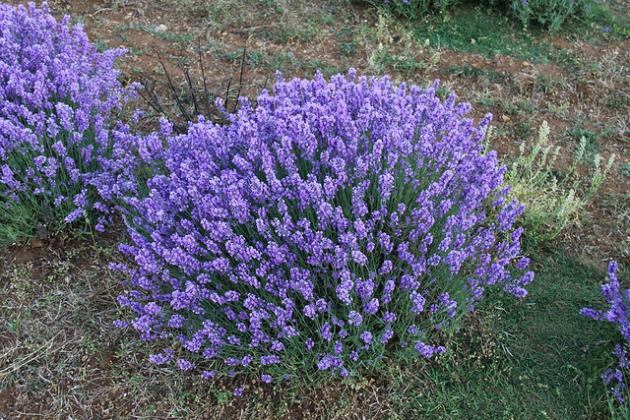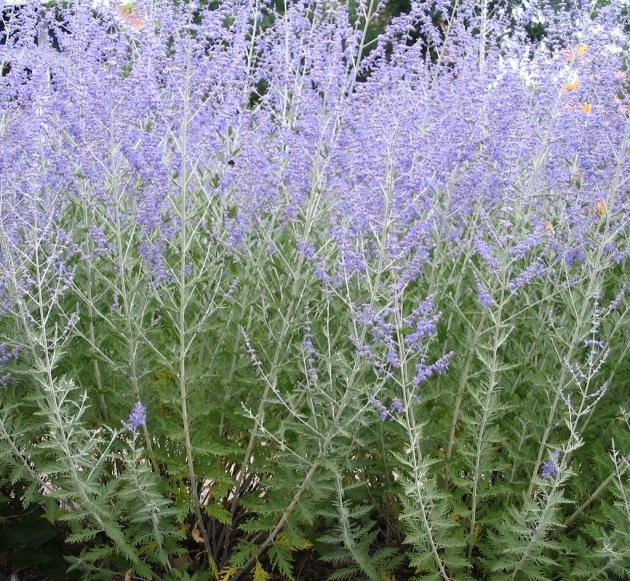What is a Sub-Shrub?
Sub-shrubs are perennial plants whose woody growth originates at the base of the plant. Herbaceous growth occurs from basal buds, or buds at the base of the plant, during the growing season. Many garden herbs fall into this category.
The sub-shrubs described below bloom on new growth. It is important to remove old and dead growth to stimulate new stem formation and flowering. Unpruned sub-shrubs tend to become leggy and unattractive.
Popular water-wise sub-shrubs include Russian sage, Blue mist spirea, and English lavender. These plants belong to a class of shrubs called sub-shrubs.
Lavender (Lavendula angustifolia)
-
- Blooms on new growth
- Prune every year following establishment
- Prune when new leaves are first seen in the spring
- Remove about 1/3 of the (woody?) top growth
- When harvesting lavender flowers, shape to promote mounded form

Russian sage (Perovskia atriplicifolia)
-
- Blooms on new growth woody tissue
- Every year – prune back to woody scaffold branches in early spring when new growth starts

Blue mist spirea (Caryopteris x clandonensis)
-
- Remove dead wood
- Blue mist blooms on new growth
- Prune hard in early spring when new growth starts to about 6 to 8 inches or lower
- Leave 4 to 6 buds below the pruning cuts
Additional Resources:
West
Growing Lavender in Colorado
Utah – English Lavender in the Garden
